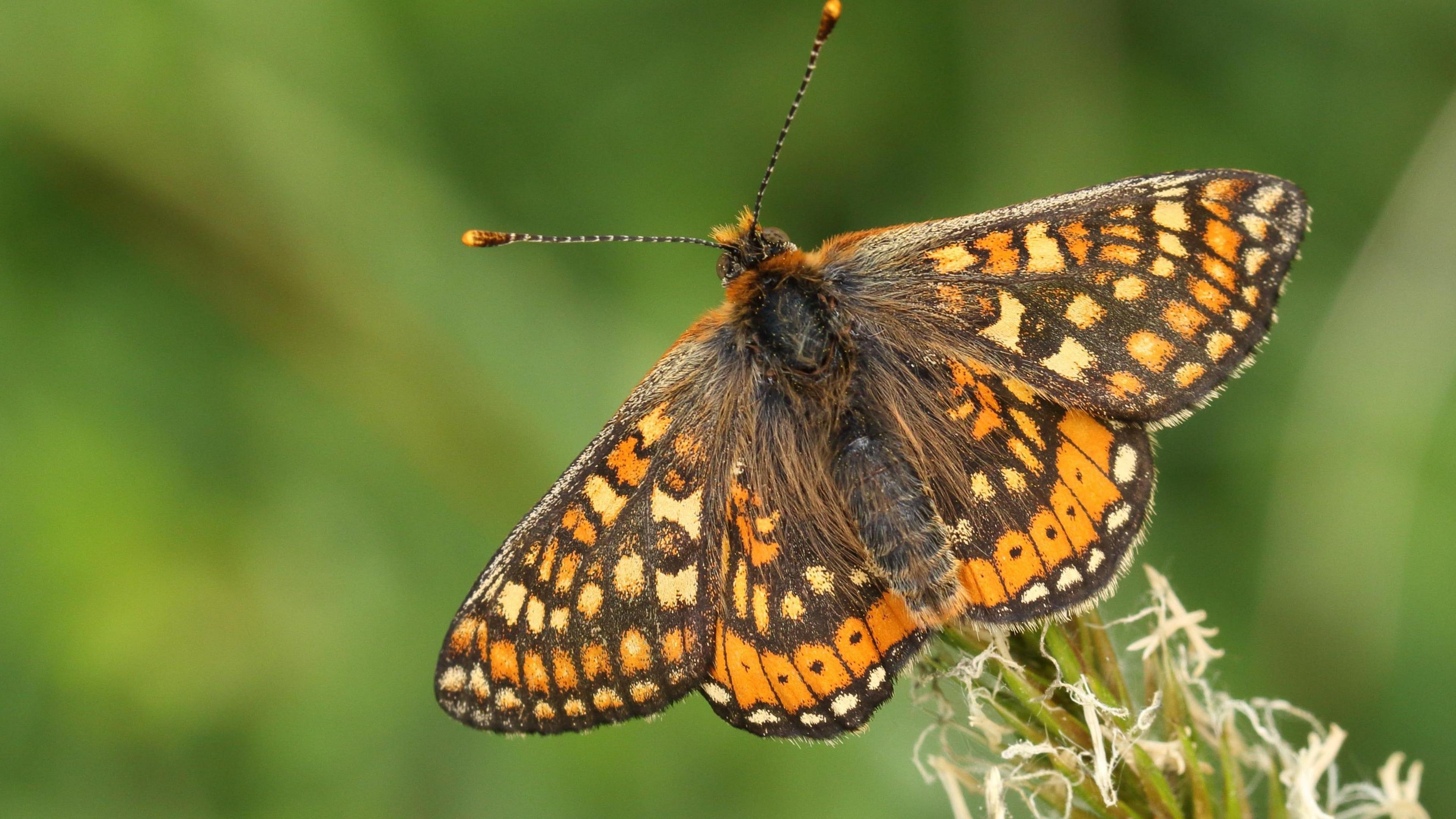The marsh plant which could boost a rare butterfly
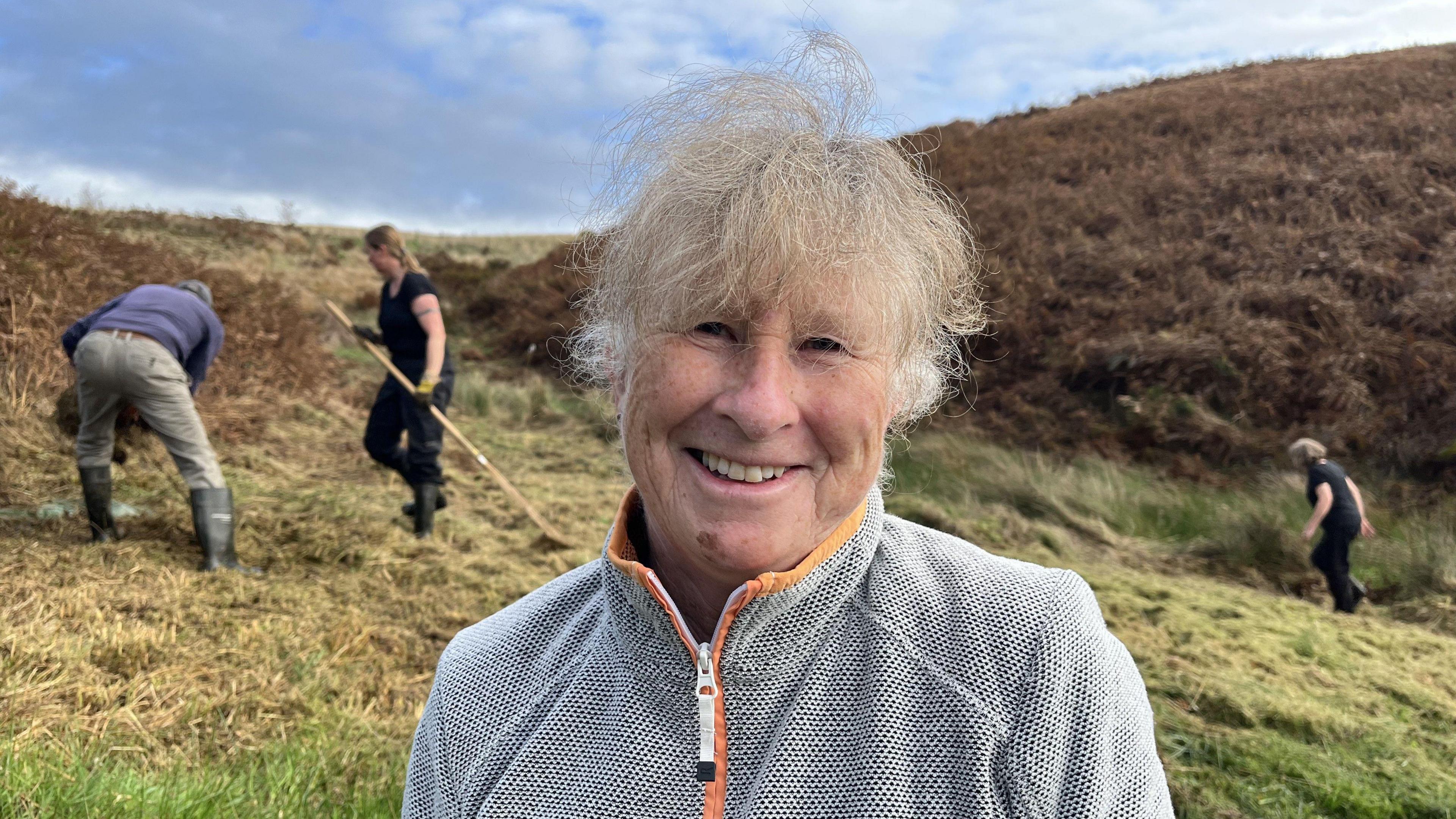
Volunteer Jan McKelvey is passionate about wildlife
- Published
A team of volunteers are planting thousands of flowers in the Shropshire Hills in an effort to improve the habitat of a rare butterfly.
The marsh violets, the food for the larvae of the small pearl-bordered fritillary butterfly, are being planted on Norbury Hill.
The aim is to plant 20,000 this winter, which Dr Charlie Bell, the project manager, said is "quite ambitious".
“We’re hoping [the violets will] provide lots of food for the caterpillars, and that’ll lead to an increase in the population of the adult butterflies.”
What is the small pearl-bordered fritillary butterfly?

The butterfly species, like many, is in decline
According to the Butterfly Conservation, external the species has undergone a severe decline in England, although remains abundant in Scotland and Wales.
There are fragmented colonies in South Shropshire, and it feeds exclusively on violets whilst in its larval stage.
Once out of the cocoon, the adult butterfly is a vibrant orange colour, with black markings and small white dots along the edges of its wings – hence the ‘pearl-bordered’ moniker.
“It’s quite a striking butterfly – it’s a wonderful thing,” Dr Bell said.
How does the project work?
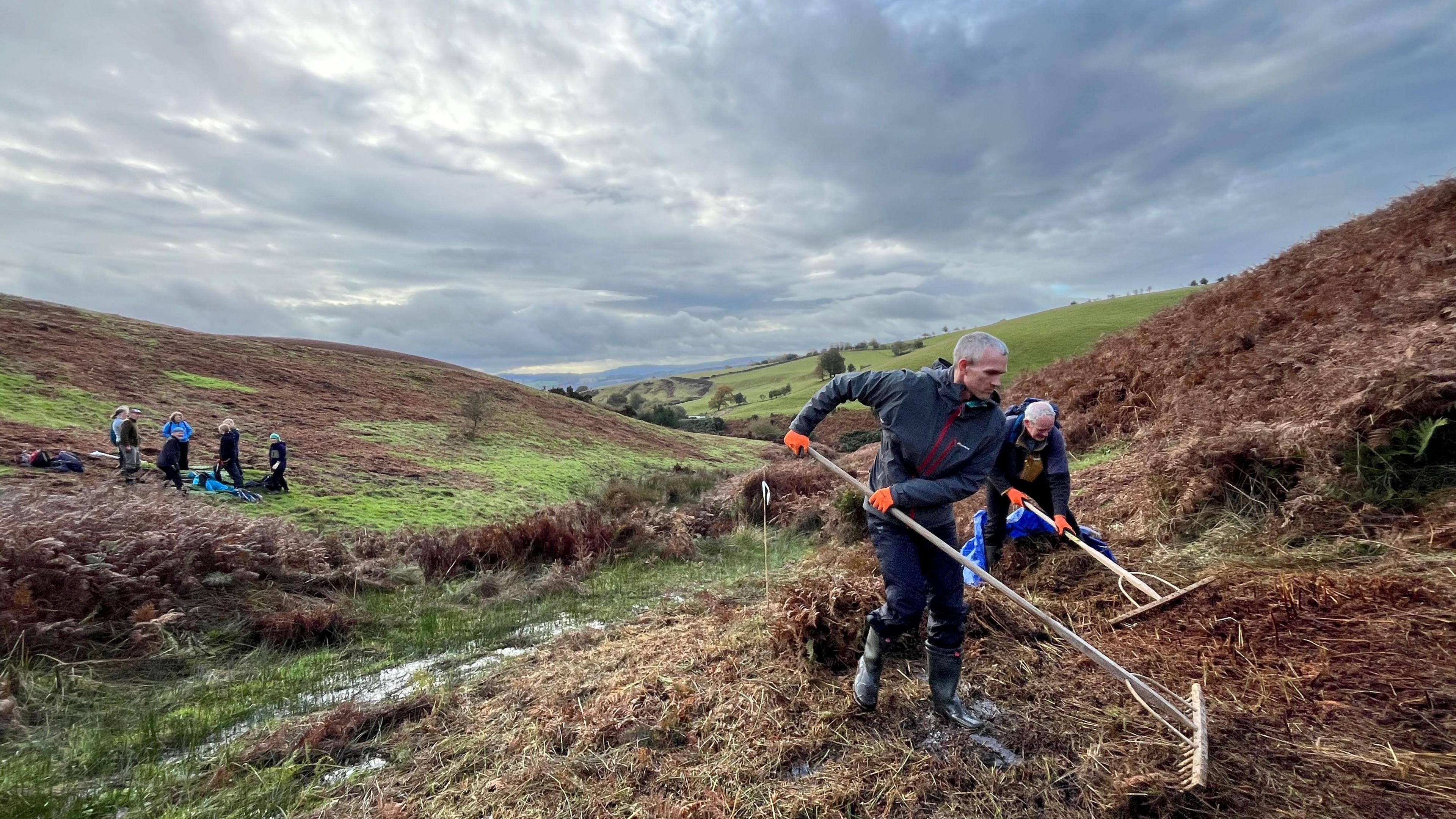
Volunteers rake the ground and plant violets one-by-one
Norbury Hill is considered to be an important site for conservation in the Shropshire Hills, bridging the gap between the Long Mynd and the Stiperstones.
The planting is organised by the National Trust's Stepping Stones project, with a team of 15 volunteers.
They wade through the boggy marshland and rake away the undergrowth. Then they place the violets one-by-one into the earth.
"It’s the sort of habitat the marsh violets love,” said volunteer Jan McKelvey.
“I’m recently retired, and my passion is wildlife, and wildlife is in such decline, so this is a very positive step to be taking."
How will this help the butterflies?
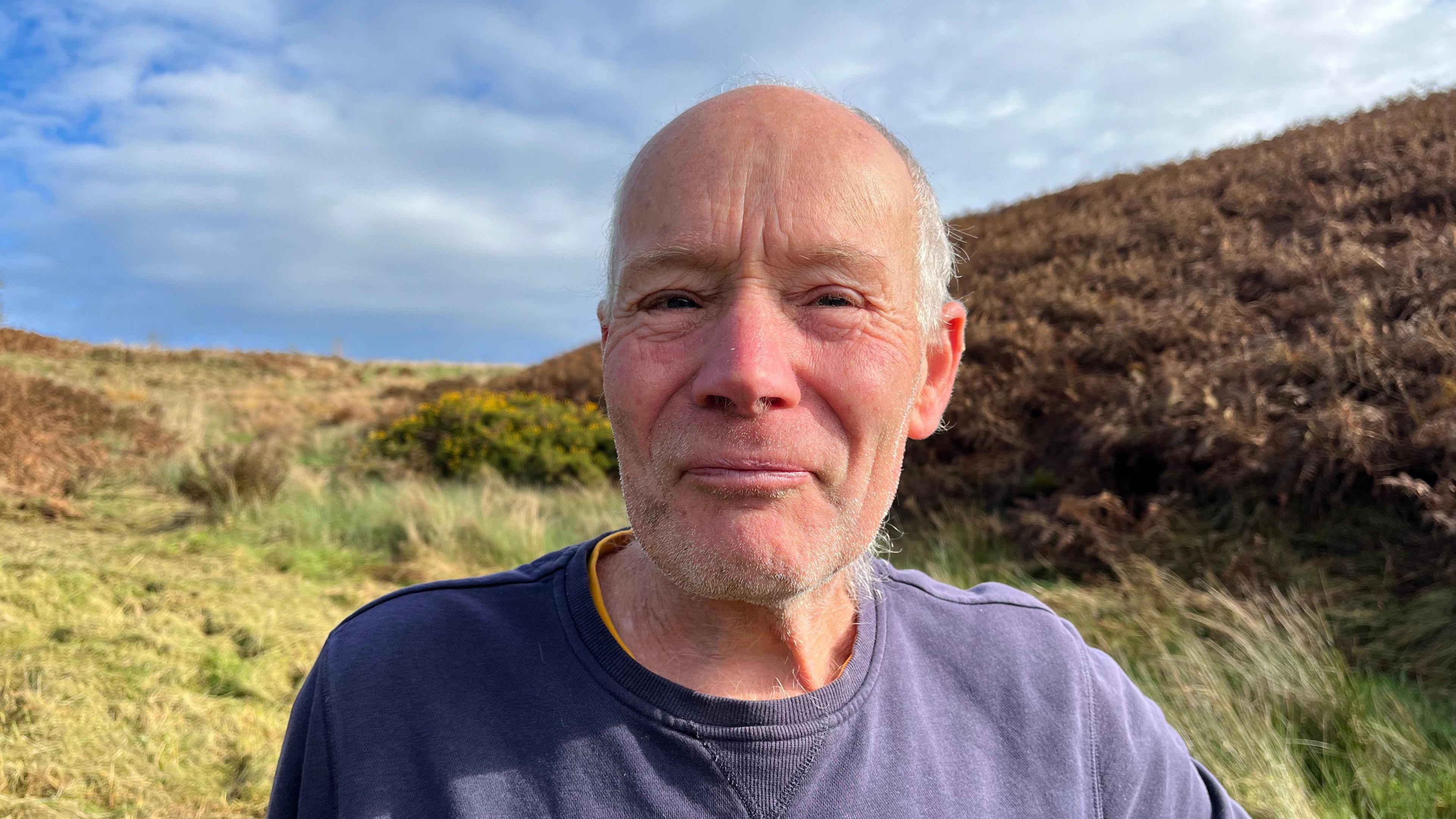
Rob Rowe hopes that the work will create corridors for the butterflies
Volunteer Rob Rowe is a trustee for the Middle Marches Community Land Trust, which bought 47 acres of Norbury Hill in 2021.
“There’s a bit of an enclave [of the species] along the eastern side of the Stiperstones and down as far as this site,” he said.
“What we’re trying to do is to make these colonies a bit stronger, so if one dies out they can move back to another one, and then provide these corridors."
Get in touch
Tell us which stories we should cover in Shropshire
Follow BBC Shropshire on BBC Sounds, Facebook, external, X, external and Instagram, external.
Related topics
- Published18 September 2024
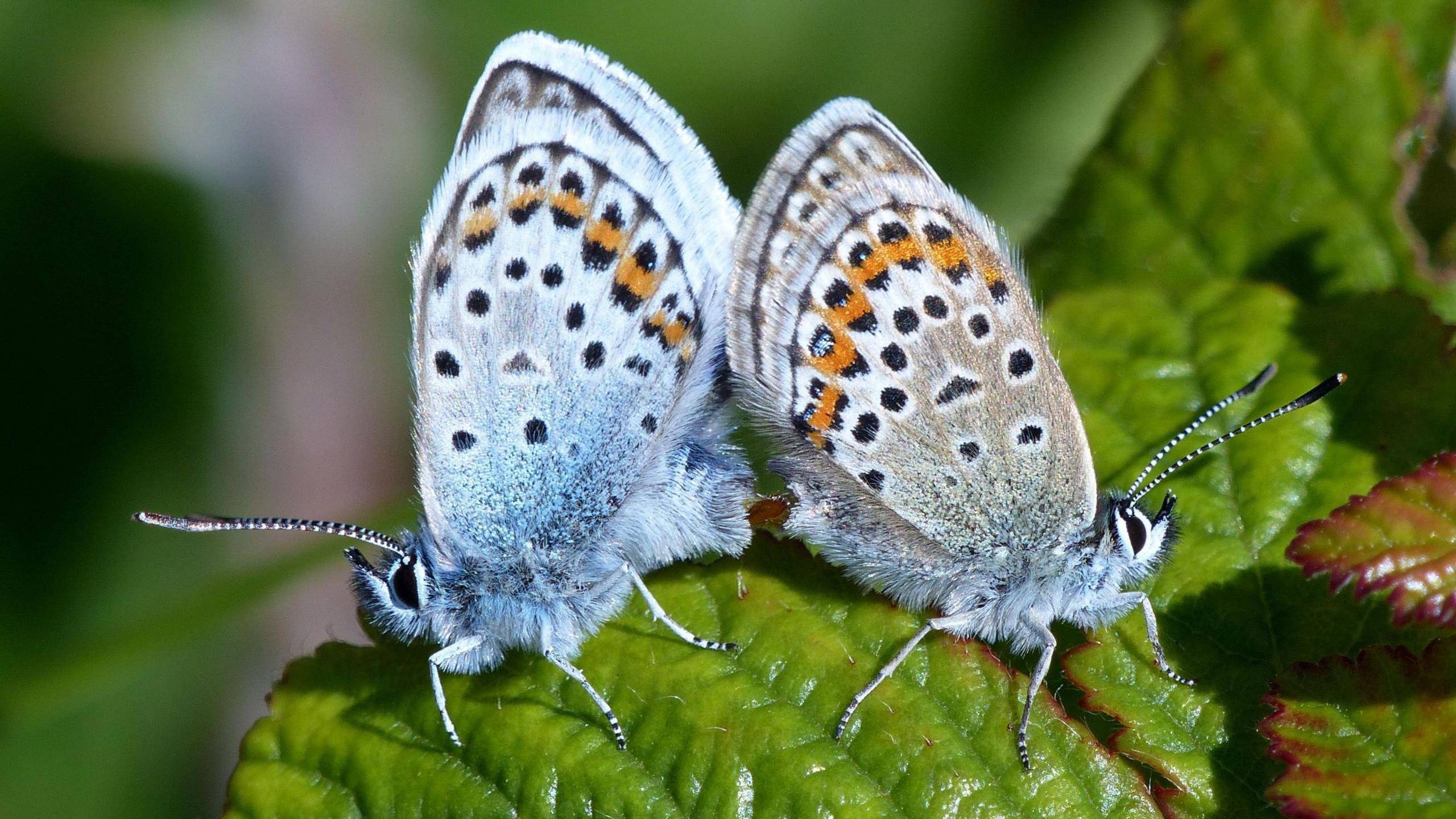
- Published2 July 2024
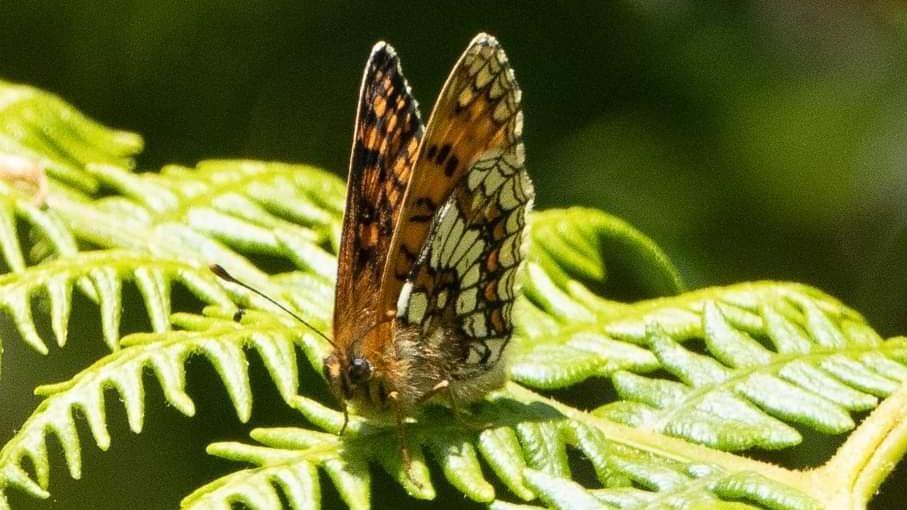
- Published16 June 2024
